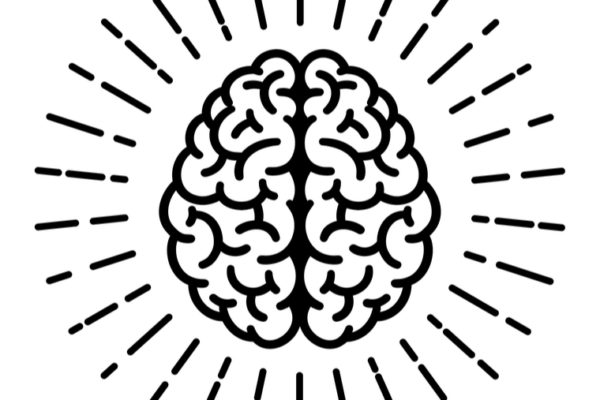When there’s a difficult task at hand, intuition tells us that the more motivated we are to complete it — the stronger the incentives — the harder we’ll work.
And the assumption has been that the relationship is linear — the better the incentives, the harder people will work. Rarely, however, do people have just one motivation.
A research team in the lab of Todd Braver, a professor in the Department of Psychological & Brain Sciences in Arts & Sciences, with appointments in radiology and neuroscience in the School of Medicine, at Washington University in St. Louis, wanted to know if the brain could integrate different sources of motivation into a single factor that affected performance and which brain regions are involved.

Their results, published April 21, in the Journal of Neuroscience, show that there is an additive integration process, and the dorsal anterior cingulate cortex (dACC) appears to play an integral role.
Before there was working from home, there was working out of an office, and there’s one reason people typically give for going to their job: to get paid.
“Sure, your main motivation is to go to the office to earn money,” said Debbie Yee, first author on the paper, who conducted the research as a PhD student in Braver’s lab. She is now a postdoctoral research associate in the Department of Cognitive, Linguistic and Psychological Sciences and the Carney Institute for Brain Science at Brown University. “But you might also enjoy the cupcakes.” (After all, there are always cupcakes or cookies somewhere in an office).

In their prior work, Yee, Braver and their colleagues tested a laboratory analog of this situation by providing “bundles” of incentives to see how they impacted performance on a challenging task situation. Specifically, they used cued task-switching paradigm in which the task rules changed randomly from trial to trial. Additionally, they examined the awareness that the participants had regarding the relationship between their motivation of the incentives and their performance. Did their self-reports match actual performance?
“We found that the self-reported motivations did line up well with their performance,” Yee said.
Braver added, “the next key question was to find out whether there were specific brain regions that were critical for translating changes in motivation with changes in performance.”
To do this, the researchers had participants perform the same task-switching trials while in an fMRI scanner, which measures blood flow to different areas of the brain, indicating which areas are most active. During the scans, the participants were informed about incentives that were available on each trial: an amount of money and a liquid. On different trials, the amount of money varied, but it was also paired with different liquids — a sweet juice, a neutral liquid or saltwater.
Crucially, participants always received both motivational incentives, but only if they performed well on the task.
The researchers discovered that task performance could be treated as an accurate indicator of motivation from previous work. “We can infer that you’re differentially motivated by the combined effect of both incentive types,” Yee said. “That is, one might be more motivated when given juice versus saltwater, as well as if they were to earn a high versus low amount of money for good performance.”
There is research showing that varied regions of the brain are involved in motivation and cognitive control independently, but, Yee said, “Our study combines both factors, and you need to think about how to use the incentives to modulate your effort in the cognitive control task. You are not only deciding between juice and money.”
Previous theoretical work suggested the dorsal anterior cingulate cortex (dACC) plays a crucial role in integrating motivational values, allocating effort and cognitive control. “We tested that hypothesis explicitly,” Yee said. “Our findings showed that the participants’ self-reporting of their motivation level matched up well with brain activity in the dACC. Fluctuations in this brain region also predicted the fluctuation in task performance.”
Braver added, “The important contribution of this work is that it places the dACC in a central position in the brain, to connect increased motivation with more effortful engagement in a task.”
Going forward, Yee says this line of research can also be used to study the motivational power of incentives that are aversive — or punishing. Additionally, this work, funded by the National Institutes of Health (NIH) and the McDonnell Center for Systems Neuroscience, has significant implications for understanding how motivation and cognitive control may change across the human lifespan, such as in healthy aging.
Additionally, a lingering question for her is investigating the relationship between value-based decision making and incentive-motivated cognitive control. Some regions of the brain do predict motivation, but not performance. “There’s a clear difference between when you’re evaluating an outcome — like getting a raise or a donut — in terms of its motivational importance to you, versus when you’re using that information to allocate how much effort or control you want to use to complete a challenging task,” Yee said. “However, we don’t yet have a clear grasp of how underlying brain mechanisms may differ across individuals.”
Braver suggests that this type of question is critical for understanding the challenges associated with mental health disorders, such as depression and addiction. “Individuals with these disorders may be able to accurately evaluate an outcome’s motivational value, but may be quite impaired in being able to use that information to adjust their effort accordingly. Simply put, they may just get stuck in the same behavioral rut. A better understanding of the role of the dACC in this process might be the key to providing more effective treatment approaches.”



